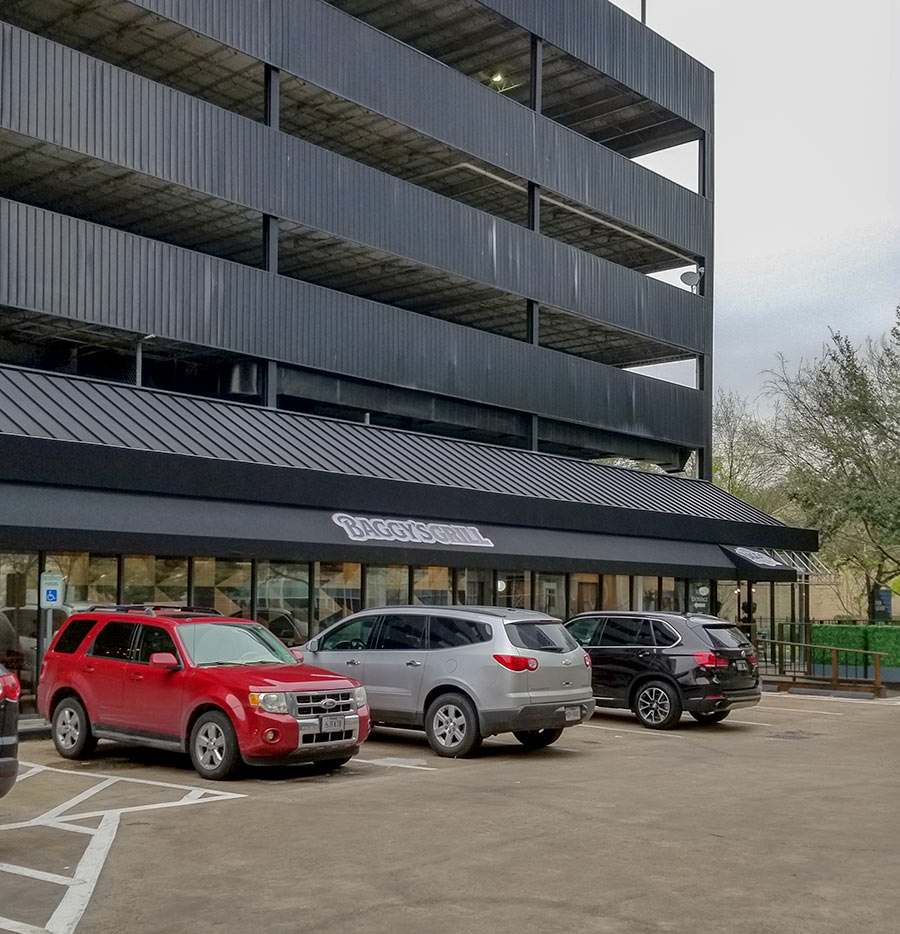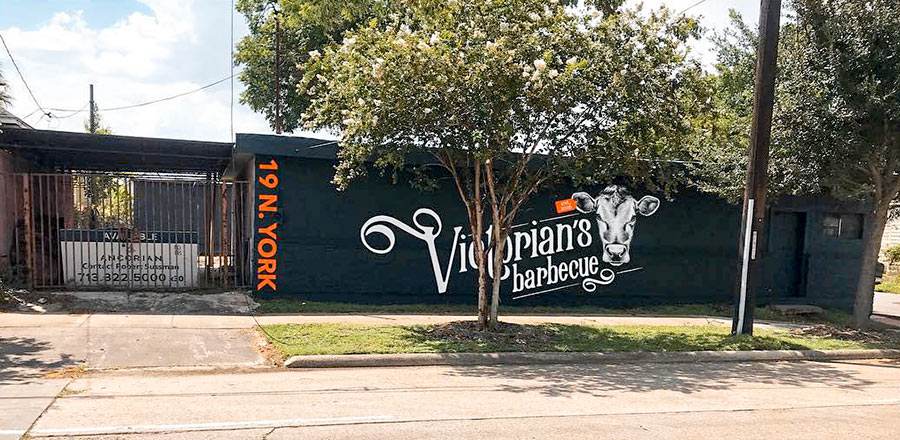A TOUR OF WASHINGTON AVE. EATERIES Wabash Antiques & Feed, the Daily Grind, El Rey Taqueria, that big new Benjy’s, and more: Katharine Shilcutt Gleave’s hungry person’s guide to Washington Ave., illustrated: “. . . the first thing you’ll notice is the abundance of new construction. Not only homes, but restaurants, banks, strip malls — a mad jumble of conflicting styles and materials that assaults the eyes. But if you look past the ubiquitous boxes of townhomes and the spaghetti-like telephone wires that crazily line the street, you’ll catch glimpses of old Houston in the tiny row houses, old brick storefronts and 1930s-era tile street signs along the curbs: Houston in a nutshell.” [Houstonist]




Why am I always being asked to look past the new construction and appreciate the old?
I’m ready for much of the old to go away or to be re-used for something new. The north side of Washington between Shepherd and Durham is a good example of re-use.
The old row houses are not “row houses”. They are typical developer spec. homes from and older era. They were developed in the same way as modern neighborhoods by developers. They just happen to be old. I guess forgetting some history facts makes it easier to criticize the present developers that are doing the same thing: providing a service to make money.
The heights isn’t much different. It was built by developers that clear cut the existing forest, laid out a street patter, and then built a consistent style of home popular at the time. Isn’t that the complain many people have about current new subdivision?
Anyway, I love what is happening to Washington Ave. It is a beautiful outcome to the lack of central planning. Local groups such as WOW, SN 22, and TIRZ #5, etc. are charting the direction of the neighborhood. These are the residents and the businesses deciding what they want. These groups have some wonderful future plans for eventual reconstruction of Washington Ave from Westcot to Studemont.
I’m all for progress, and I’m afraid that it comes off as if I’m very anti-development sometimes. I guess have an overdeveloped sense of appreciation for older things, whether or not they’re necessarily deserving of any appreciation.
In a city like Houston, however, preservation is a dirty word, so almost any thought or effort put towards encouraging people to appreciate our past (and, by extension, the buildings from our past) is frowned upon.
It’s a shame, really. You can have old coexisting peacably with new. We just don’t make an effort here.
I have no problem with preserving historic structures. I’m actually against rules saying something must be preserved. If the community really wants something saved, then they should buy it.
That’s my argument for the River Oaks Theater fiasco. All the people that truly wanted the theater saved should have pulled monetary resources and purchased it from the owner. If they weren’t ready to do that, then they didn’t want to truly save it.
Exactly, KBJ. The same goes for Ashby highrise. If Maryland Manor was so critical to the quality of life in Southampton, the residents should have allocated a tiny little bit of their massive combined net worth to buy it for themselves.
Bring on the bulldozers. The stuff being torn down all over the inner loop is for, the most part, garbage. There are exceptions, of course, but I think of townhouse haters have a false recollection of the stuff that they have replaced.
Progress is good. Would Houston be better off is West U (or even the West End) was still jammed with 1,200 SF termite infested cracker boxes? What if River Oaks was still old man Dickie’s farm? What if Greenway Plaza still looked like Weslayan Palza?
Young professionals and executives need a place to live and work. If we don’t offer attractive options in-town, people will just move out of town. The more people we can pack inside the Loop, the better. More people, more restaurants, more bars, more shops. More = Better. That’s how vibrant cities are built.
Without question, some of the new stuff is an assualt on the eyes, but I’ll take that over government controls any day of the week. The best thing the city of Houston ever did was get out of the way of developers.
I moved 20 yrs ago from the West End to Oak Forest and then back to Rice Military. While I never really moved far out, I love the Rice Military neighborhood. The last two posters are right. Most of all of the remaining residential properties remaining in these popular for urban renewal inner city areas are not historical structures, they are just old generally not worth renovating dwellings. While I do appreciate alot of old architecture and antiques, much of what was built in these areas of discussion was not high end, or even innovative construction. When it was nothing special when new, what makes it so valuable when it’s 50 or 60 years old? What I like about my neighborhood is that it’s not cookie cutter and there’s not alot of junky dilapidated homes left anymore. While there are some cheesy builders that have built problematic homes, there are still many quality built homes in the neighborhood. The Washington Ave. corridor is an exciting developmental process unfolding before our eyes.
I think one of the problems around here is that the new development isn’t smart. Just because a formerly dilapidated area is demolished and new buildings are built doesn’t mean that things are moving in the right direction — for example, how many streets full of cheap strip centers can we have? Never enough, I guess.
One thing Houston is blessed with is lots of space. We could be effectively filling in the empty space, often in areas where good new construction is really needed, while preserving and re-using the older structures that still have life in them. And yes, young professionals and executives really would go for that — they do all over the country.
I love when people use the term smart development….
Because what is really means is: “The development I like.”
The beauty of Houston development is that it is natural and organic in nature. The hand of government doesn’t interfere much with it. It’s allowed to grow the way the free market wants it.
As Washington grows ever denser, typical strip centers may go away due to the demand requires something more dense than a strip center….
I think we are already seeing this on Washington right now. We saw this happening in Rice Village. River Oaks Shopping center is also getting this treatment which in its first stages.
In Uptown, the Boulevard Place project is taking out a strip center and building something larger and denser. I think other shopping centers in Uptown will start undergoing this process too.
Does anyone know what the new construction on Washington right next to the Daily Grind is going to be? There are some new modern homes being built, but a slab right next to the Daily Grind parking lot looks like a restaurant.